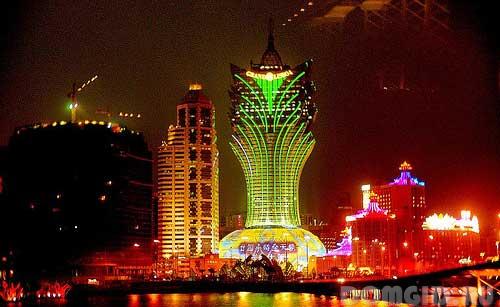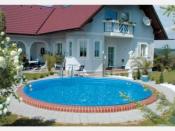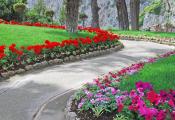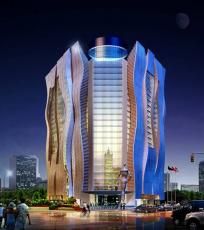Search
Login
Media facade in a modern design, options for using the media facade when decorating the facade of a house, useful tips
In those days when outdoor advertising was just in its infancy, advertising signs were especially popular, then vinyl posters. Nowadays, such advertising is unlikely to be of particular interest - modern developments in this area have created a very attractive option - a media facade that can be used not only to convey information, but also serve as a decoration of the surface of the walls of structures.
Content
- What is a media facade video
- Benefits of LED Media Facades video
- Application area
- Media facade - price and payback
- The principle of operation of media facades and the reasons for the growth of their popularity video
- The most famous buildings equipped with media facades
- How to choose the right screen
What is a media facade

This design is almost invisible to people in the building, and its view from the side of the street resembles a huge television screen. If we consider the fundamental side of the issue, the creation of media facades became possible due to the appearance of plastic LED screens that can be used as carriers of advertising information and architectural coatings.

This useful invention, to some extent, allowed to resolve the debate about whether it is possible to combine the architecture of the modern city and advertising structures.
The use of new technology is the optimal combination of innovation and a traditional look at the principles of designing structures for a modern city.

Now consider what a media facade is. In terms of technical performance, they are divided into three types:
- Rack (strip) - it was they who appeared first and attracted advertisers with their unprecedented opportunities. They are a pressure tube enclosing an LED board inside. The tubes are inserted into the guide lamellas, mounted on supporting vertical cables. The resulting mesh is mounted on the facade of the building, its construction does not burden it in any way. Use a rack media facade for installation on walls that do not allow light to pass. With excellent quality, such screens are easy to maintain.
- The mesh version of the media facades is very light in weight, which allows them to be installed even on glass surfaces, while the owners of the structure can not worry about the integrity of the fragile structure. This type of screen is mounted on the upper and lower parts of the facade using metal cables and locks.
- Modular structures are assembled on metal frames, such screens can consist of LED modules of various shapes and sizes. The simplicity of shape change and low weight allow their universal use on surfaces of any shape. They work very quietly, they consume electricity fairly sparingly.
Benefits of LED Media Facades

LED media facades are fundamentally different from neon lights, they are able to completely repeat the outlines of the structure, to form its appearance in the dark. Their indisputable advantage is:
- the ability to mount on structures of various sizes and any complex shapes, including broken and spherical ones,
- colorful image
- light weight
- tightness
- low power consumption
- simplicity of installation and management,
- interactivity and sufficient target effectiveness.

The modules from which the LED grid is built have IP 65 protection, they are impervious to water. Installing modules is quick. To control the screen, you can use a computer connected via patch cables and a controller.

With the help of such a screen, you can translate into reality exclusive design ideas and use it as an original lighting option or to display videos.
The screen can operate from a signal from a video camera, television receiver, VCR, DVD player, you can also use scenes recorded on the hard disk, their playback can be carried out according to a predetermined schedule. You can also use the unified designs of the facades, they can be mounted for temporary use on different buildings of a similar design.
Application area

Today, media facades have gained popularity around the world. They are used as
- means of interactive outdoor advertising,
- for broadcasting TV shows or video recordings,
- to create an author's version of lighting,
- for artistic purposes
- as a means of communication,
- as an option for decorating cities.

Moreover, it should be noted that the media facades located on the structures attract much more attention than the architecture itself. Media facades are able to evoke different kinds of emotions in people, which to a large extent depend on the literacy of the use of this innovation by an architect.
More advanced options can be considered modern projects, when the media facade option is part of the overall project, and is not tied to a previously constructed facility.
Media facade - price and payback

Of course, the installation of a media facade is difficult to attribute to cheap events - a square meter of such a screen can cost from one and a half to three thousand euros, depending on the version. The cost is affected by the size of the screen and the density of the LEDs. In most cases, media facades use:
- when holding large-scale actions, political or sports events,
- for commercial or image advertising.

The average payback period of a screen with an area of \u200b\u200b500 to 1000 square meters is about two years. Practice shows that media facades installed in different cities not only pay for installation costs, but also bring considerable profits for even advertising placed on them.
The principle of operation of media facades and the reasons for the growth of their popularity

The main component of the media facade is the LED. It is a semiconductor element (LED), with the help of which the electric current is converted into light radiation during the passage of the p-n junction. If we compare LEDs with incandescent or fluorescent lamps, it should be noted that the LEDs are different:
- very pure shades of color (which was immediately appreciated by designers), the ability to receive a large number of shades,
- high reliability during operation,
- strength
- low power consumption,
- high efficiency
- a service life of 100,000 hours,
- environmental friendliness
- low fire hazard.
Previously, such devices could only be used in the dark - daylight compared with the glow of the screen was too bright and the LEDs looked very dull and unsightly. The screens created today consist of fragments, each of these pixels includes 6 LED elements, their brightness allows you to create images that look colorful and bright under any light intensity.

The use of media facades indoors is not common - bright light screens look in a limited room is not always appropriate, advertising placed in this way has a lower payback.

Popularization of LED screens contribute to:
- the ability to quickly change the appearance of the structure, it really takes seconds to transform these
- low cost of maintenance and operation,
- very fast self-sufficiency,
- the opportunity to attract the attention of a potential consumer in any weather and at any time of the day.

Among the negative points include:
- the negative attitude of some people towards large-format, eye-catching advertising,
- dependence of work on the availability of power supply and on the serviceability of the control computer,
- fairly high initial price.
The most famous buildings equipped with media facades

The world famous Chinese hotel Grand Lisboa.

Facade of the Moscow hotel Belgrade.

The facade of the Moscow hotel Golden Ring.

Chinese resort Phoenix Island.
How to choose the right screen

When choosing a media facade, experts recommend giving preference to the rack option in case of placing the screen on a dense wall without windows. If the installation of media facades will be carried out on a glazed surface, then the mesh structure is the best option - it is light in weight and will not pose a danger to the glass surface. A modular version will be needed if it is intended to be used on different surfaces, glazed and dense.





